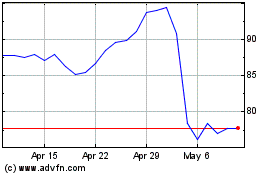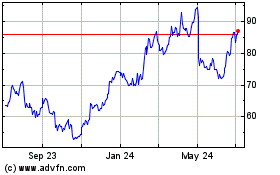UNITED STATES
SECURITIES AND EXCHANGE COMMISSION
Washington, D.C. 20549
FORM SD
Specialized Disclosure Report
|
| | |
AAON, Inc. |
(Exact name of registrant as specified in its charter) |
| | |
Nevada | 0-18953
| 87-0448736 |
(State or other jurisdiction | (Commission | (IRS Employer |
of incorporation or organization) | File Number) | Identification No.) |
| | |
2425 South Yukon, Tulsa, Oklahoma | | 74107 |
(Address of principal executive offices) | | (Zip Code) |
| | |
Scott Asbjornson (918) 583-2266 |
(Name and telephone number, including area code, of the person to contact in connection with this report.) |
Check the appropriate box to indicate the rule pursuant to which this form is being filed, and provide the period to which the information in this form applies:
a Rule 13p-1 under the Securities Exchange Act (17 CFR 240.13p-1) for the reporting period from January 1 to
December 31, 2014.
Section 1 - Conflict Minerals Disclosure
Item 1.01 Conflict Minerals Disclosure and Report
A copy of AAON, Inc.'s Conflict Minerals Report is filed as Exhibit 1.01 hereto and is publicly available at www.aaon.com.
Item 1.02 Exhibit
The Conflict Minerals Report required by Item 1.01 is filed as Exhibit 1.01 to this Form SD.
Section 2 - Exhibits
Item 2.01 Exhibits
The following exhibit is filed as part of this report:
Exhibit 1.01 - Conflict Minerals Report as required by Items 1.01 and 1.02 of this Form.
SIGNATURES
Pursuant to the requirements of the Securities Exchange Act of 1934, the registrant has duly caused this report to be signed on its behalf by the duly authorized undersigned.
|
| | | |
AAON, INC. | |
(Registrant) | | |
| | | |
/s/ Scott M. Asbjornson | | May 29, 2015 |
By: Scott M. Asbjornson, Chief Financial Officer | | (Date) |
AAON, Inc.
Conflict Minerals Report
For The Year Ended December 31, 2014
OVERVIEW
This report has been prepared by AAON, Inc. (herein referred to as “AAON,” the “Company,” “we,” “us,” or “our”) pursuant to Rule 13p-1 (the "Rule") promulgated under the Securities Exchange Act of 1934, as amended. Please refer to Rule 13p-1, Form SD and the 1934 Act Release No. 34-67716 for definitions to the terms used in this Report, unless otherwise defined herein. We are engaged in the manufacture and sale of air conditioning and heating equipment consisting of rooftop units, chillers, packaged outdoor mechanical rooms, air handling units, makeup air units, energy recovery units, condensing units, self-contained units and coils. We conducted an analysis of our products and found that small quantities of tin, tantalum, tungsten and gold ("3TG") are found in our products.
DUE DILIGENCE
Design of Due Diligence
Our due diligence measures have been designed to conform, in all material respects, with the due diligence framework presented by the The Organisation for Economic Co-operation and Development ("OECD") in the publication OECD (2013) Due Diligence Guidance for Responsible Supply Chains of Minerals from Conflict-Affected and High-Risk Areas: Second Edition, OECD Publishing ("OECD Guidance") and the related Supplements for gold and for tin, tantalum and tungsten. The discussion below provides the applicable OECD Guidance recommendation followed by a summary of our activities in line with the OECD Guidance.
1. Establish strong company management systems.
- Adopt and clearly communicate to suppliers and the public, a company policy for the supply chain of minerals originating from conflict-affected and high risk areas. This policy should incorporate the standards against which due diligence is to be conducted.
We have adopted a conflict minerals policy related to our sourcing of 3TG, and communicated the policy to suppliers and the public through our website at www.aaon.com. The policy requires suppliers to perform due diligence and outlines our expectations of suppliers.
- Structure internal management to support supply chain due diligence.
We have established a management team to support supply chain due diligence related to 3TG. Our management team includes individuals from supplier management, engineering, accounting, and legal.
- Establish a system of controls and transparency over the mineral supply chain.
As stated above, we have implemented a conflict minerals policy and have established our management team to support supply chain due diligence. Additionally, in 2014, we implemented the iPoint Conflict Minerals Platform ("iPMCP"), which utilizes the template developed by the Electronic Industry Citizenship Coalition® ("EICC®") and The Global e-Sustainability Initiative ("GeSI"), known as the EICC-GeSI Conflict Minerals Reporting Template (the "Template"). The Template was developed to facilitate disclosure and communication of information regarding smelters and refiners that provide material to a manufacturer’s supply chain. It includes questions regarding a direct supplier’s conflict-free policy, its due diligence process, and information about its supply chain such as the names and locations of smelters and refiners as well as the origin of 3TG used by those facilities. Utilizing iPCMP and the Template enhances our ability for information gathering and tracking, record maintenance, as well as information sharing regarding smelters and refiners.
- Strengthen company engagement with suppliers. A supply chain policy should be incorporated into contracts and/or agreements with suppliers.
The products that we manufacture typically contain hundreds of parts from many direct suppliers. We have relationships with a vast network of suppliers and there are generally multiple tiers between the 3TG mines and our direct suppliers. Therefore, we must rely on our direct suppliers to work with their upstream suppliers in order that they may provide us
with accurate information about the origin of 3TG in the components we purchase.
- Establish a company-level, or industry-wide, grievance mechanism as an early warning risk awareness system.
We have established an email address to allow interested parties to contact us at conflictminerals@aaon.com with any questions or for more information.
2. Identify and assess risk in the supply chain.
Because of the complexity of our supply chain, we developed a risk-based approach that focused on our suppliers that we believed were likely to provide us with components and raw materials containing 3TG from the Covered Countries, as defined in the Rule. This was accomplished by the management team reviewing the listing of components and raw materials provided by all suppliers and identifying those components and raw materials that may contain 3TG. As stated above, we implemented the iPCMP and the Template to facilitate our due diligence efforts for the current reporting period. We have determined that requesting our suppliers to complete the Template represents our reasonable best efforts to determine the mines or locations of origin of 3TG in our supply chain.
Responses were provided using the Template as well as other forms of communication utilized by the suppliers. We reviewed and evaluated the responses against criteria developed by our management team to determine which required further engagement. The criteria included inconsistent, incomplete and/or inaccurate responses, as well as responses that indicated the supplier potentially sources 3TG from Covered Countries under the Rule.
Our team identified 409 suppliers in the current reporting period based upon the criteria noted above. All of the suppliers were sent the Template as well as a cover letter outlining the requirements of the Rule. We utilized iPCMP for 336 of the suppliers. We mailed the Template to the remaining 73 suppliers for which we had no email contact.
Of the 409 suppliers we sent the Template to, we received 91 responses, or a response rate of approximately 22 percent. The majority of responses received provided data at a company level. Of the 91 responses received, based upon review and evaluation against our criteria, we identified 5 suppliers whose response indicated that their company supplied components or raw materials containing 3TG that originated in the Covered Countries per the Rule. However, despite the due diligence we have undertaken during the reporting period, based upon the responses obtained, we are unable to determine whether the 3TG represented to have originated from the Covered Countries were incorporated into the components or raw materials supplied to us in 2014. Therefore, we are unable to determine whether any of our products manufactured during the reporting period contained 3TG that originated from the Covered Countries.
3. Design and implement a strategy to respond to identified risks.
| |
• | Senior management is briefed about our due diligence efforts. |
| |
• | We have adopted a conflict minerals policy and implemented a management team for oversight over the conflict minerals process. |
| |
• | We have implemented a risk management plan that outlines the company responses to identified risks. |
| |
• | We engage in regular ongoing risk assessment through our suppliers’ data submissions and focus on continuous improvement efforts to improve the return rate of our future survey efforts as well as the completeness and accuracy of our suppliers' responses. |
| |
• | We intend to include a conflict minerals flow-down clause in new or renewed supplier contracts. |
4. Carry out independent third-party audit of supply chain due diligence at identified points in the supply chain.
We do not typically have a direct relationship with 3TG smelters and refiners and therefore do not perform or direct audits of these entities. We review public information provided by EICC and GeSI with respect to their Conflict-Free Smelter Program and utilize iPCMP which is updated with such information.
5. Report on supply chain due diligence.
This Conflict Minerals Report constitutes our annual report on our 3TG due diligence, is available on our website at www.aaon.com and is filed with the Securities and Exchange Commission. As described in section 2, despite our due diligence efforts for the calendar year 2014, based upon the responses of our suppliers, we were unable to determine whether the 3TG represented to have originated from the Covered Countries were incorporated into the components or raw materials supplied to us during this reporting period.
Cautionary Note Concerning Forward-looking Statements
This report contains statements which, to the extent they are not statements of historical or present fact, constitute "forward-looking statements" under the securities laws. These forward-looking statements are intended to provide management's current expectations or plans for our future operating practices and performance, based on assumptions currently believed to be valid. Forward-looking statements can be identified by the use of words such as "believe," "expect," "expectations," "plans," "strategy," "estimate," "project," "target," "anticipate," "will," "should," "see," "guidance," "confident," and other words of similar meaning in connection with a discussion of future performance. Forward-looking statements may include, among other things, statements relating to future supply management practices, policies and plans for procurement of materials, risk management practices, supply chain infrastructure and efforts to improve supply chain transparency. All forward-looking statements involve risks, uncertainties and other factors that may cause actual results to differ materially from those expressed or implied in the forward-looking statements. For those statements, we claim the protection of the safe harbor for forward-looking statements contained in the U.S. Private Securities Litigation Reform Act of 1995. Such risks, uncertainties and other factors include, without limitation, the ability of the Company, its suppliers, industry groups and supplier organizations to obtain reliable information as to the source of purchased production materials; the timing for the development of infrastructure allowing such information to be compiled and shared with others in a cost effective and efficient manner; the impact of changes in laws and regulations, and the interpretation thereof, and in political conditions; and other factors beyond our control. The forward-looking statements speak only as of the date of this report and we undertake no obligation to publicly update or revise any forward-looking statements, whether as a result of new information, future events or otherwise, except as required by applicable law.
AAON (NASDAQ:AAON)
Historical Stock Chart
From Mar 2024 to Apr 2024

AAON (NASDAQ:AAON)
Historical Stock Chart
From Apr 2023 to Apr 2024
